This article explains creating a new storage pool with Storage Spaces on Windows 11.
Storage Spaces is a feature in Windows that allows you to combine multiple hard drives into a single virtual drive, also known as a storage pool. This feature enables you to create a more flexible and scalable storage solution for your computer.
These storage spaces typically store two copies of your data, so if one of your drives fails, you will still have an intact copy of your data. If you run low capacity, add more drives to the storage pool.
Creating a storage pool with Storage Spaces on Windows has several advantages. Firstly, it allows you to combine multiple hard drives into a single virtual drive, providing a more flexible and scalable storage solution for your computer.
Additionally, Storage Spaces provides redundancy by storing two copies of your data, which ensures that your data remains intact even if one of your drives fails.
Create a new storage pool with Storage Spaces
As mentioned, users can create a new storage pool with Storage Spaces on Windows 11.
Here’s how to do it.
First, open the Windows Settings app.
You can do that by clicking on the Start menu and selecting Settings. Or press the keyboard shortcut (Windows key + I) to launch the Settings app.
When the Setting app opens, click the System button on the left.
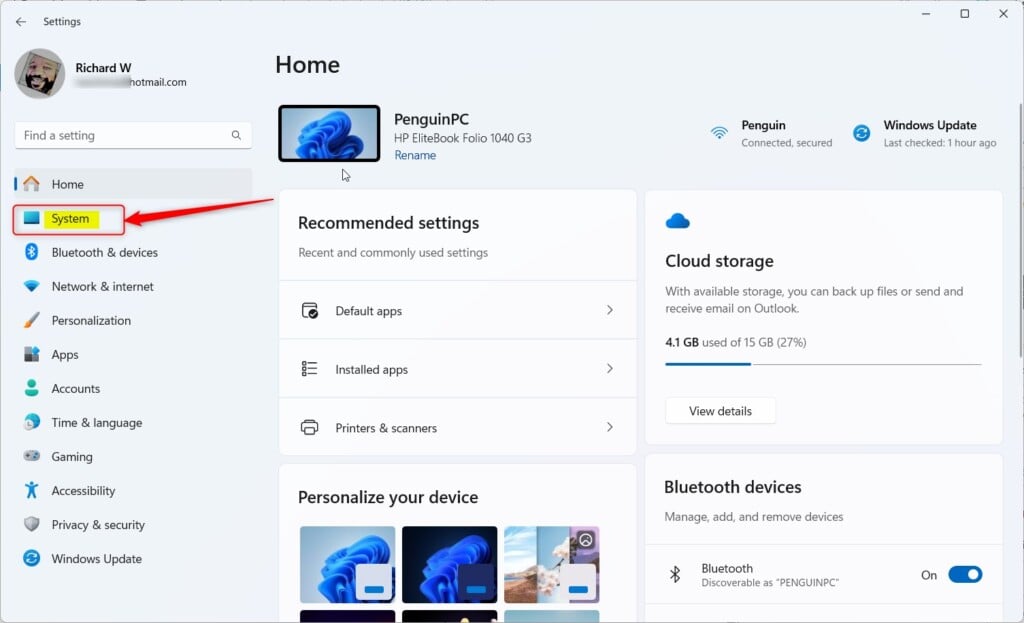
Select the Storage tile on the right to expand it.
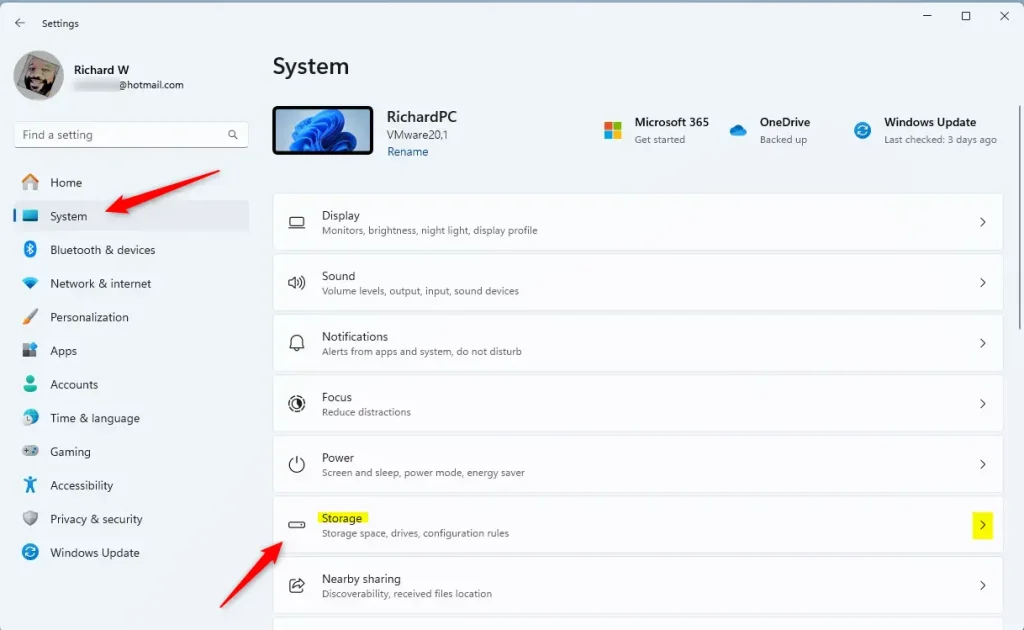
On the System -> Storage settings page, select and expand the “Advanced storage settings tile, and click the “Storage Spaces” tile to expand it.
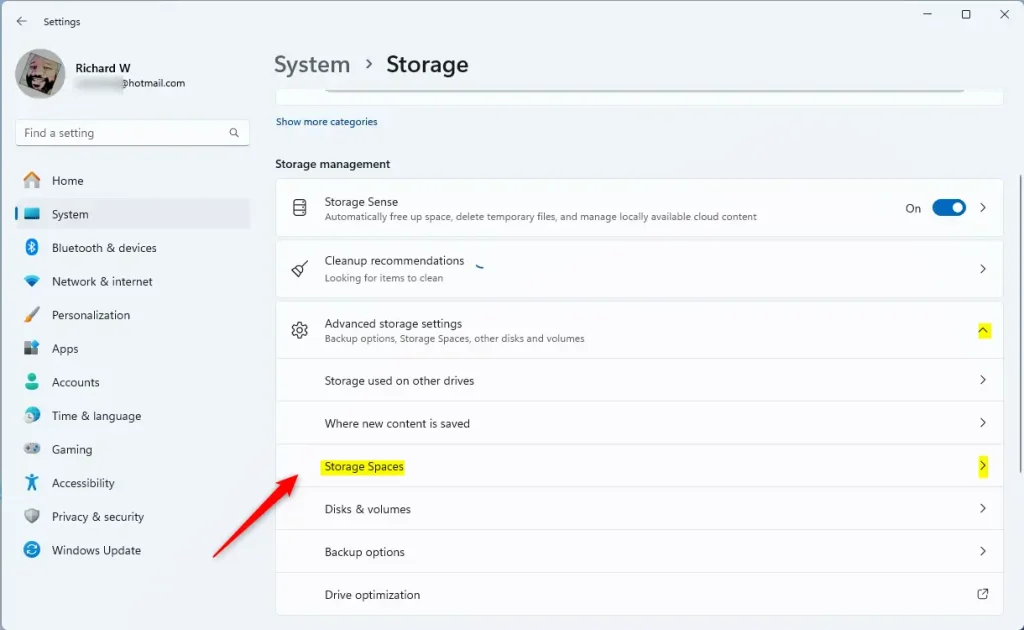
Next, click the “Add” button on the “Add a new Storage Pool” tile.
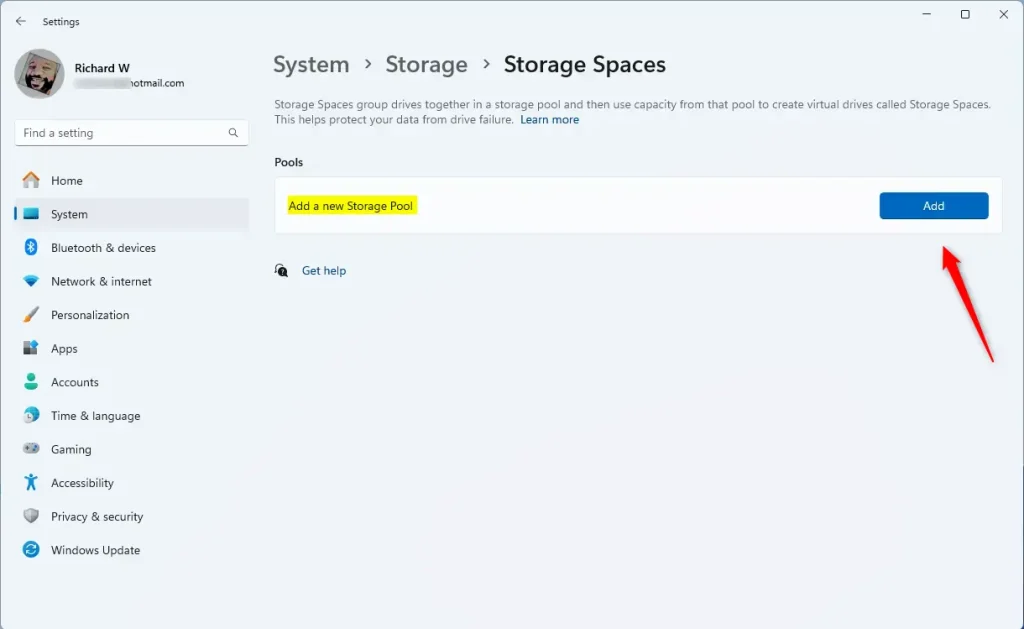
On the “New storage pool” window, type the name you want for this new storage pool. Select any available disk(s) to add to this new storage pool.
You need at least two extra drives (in addition to the Windows drive (C:)). These drives can be internal, external, or solid-state drives.
Click the Create button to create a pool.
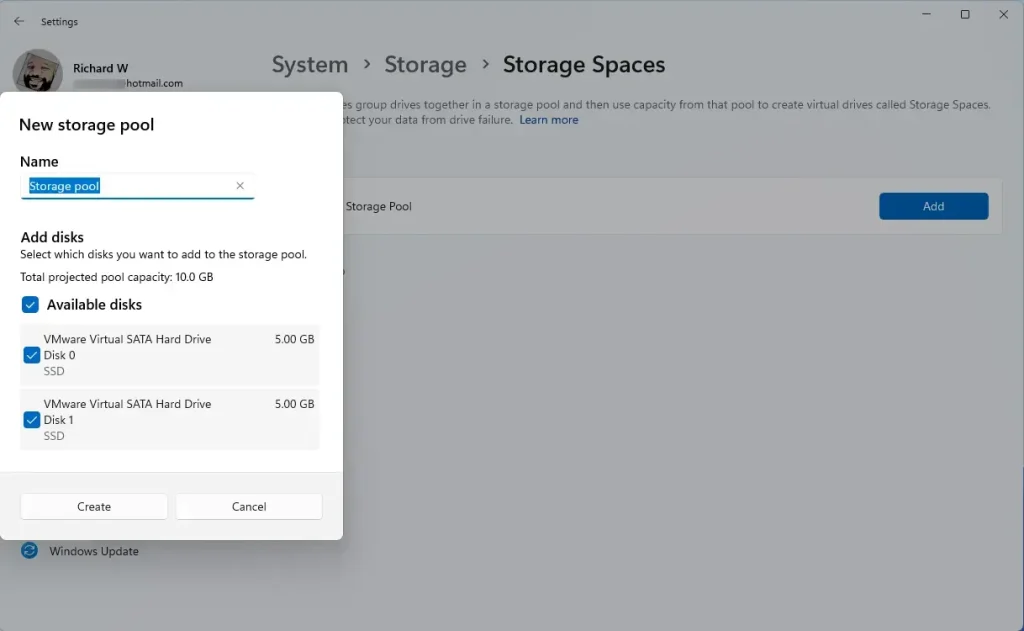
On the next window, choose the new storage space size and resiliency options:
Size & Resiliency:
- Simple – requires at least two drives and provides no data protection.
- Two-way mirror – requires at least two drives, and there is data protection when a drive fails.
- Three-way mirror – requires at least five drives and provides data protection. It will withstand two drive failures.
- Parity – requires three drives with data protection and performance.
- Dual parity – requires at least seven drives and provides data protection and performance. It will withstand two drive failures.
Then click Create to create a new storage space.

Next, in the new volume window, provide a label name and drive letter and format the new volume using NTFS or FAT32.
When done, click Format to create a new volume.

Once done, a new drive or volume for the “Storage pool” should be created and accessible via File Explorer.
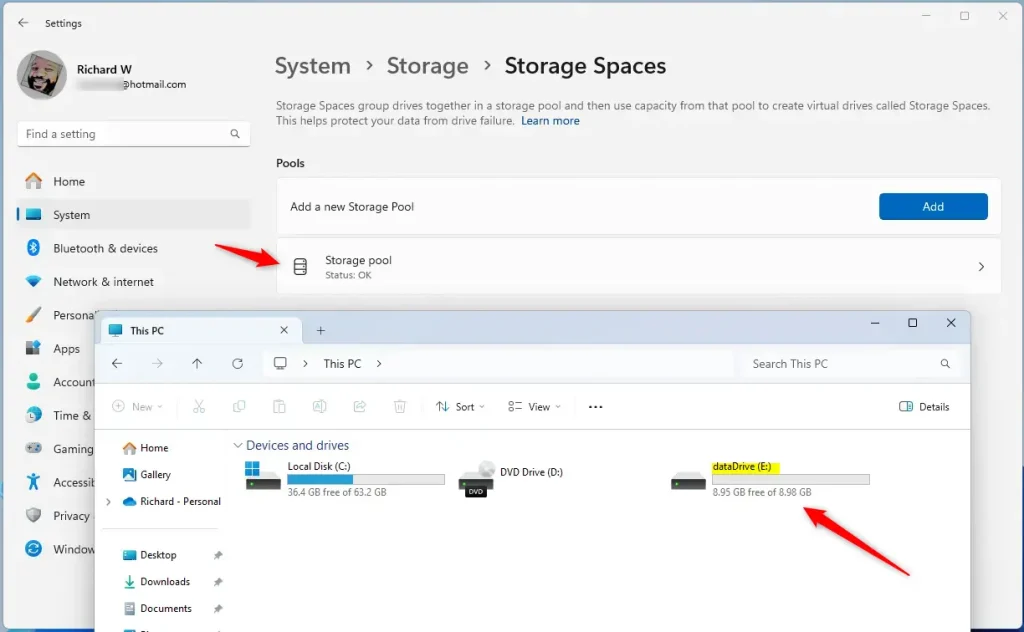
That should do it!
Reference:
Conclusion:
- Storage Spaces in Windows 11 provides a flexible and scalable storage solution for combining multiple hard drives into a single virtual drive.
- The redundancy feature of Storage Spaces ensures the integrity of data by storing two copies and withstanding drive failures based on selected resiliency options.
- Creating a new storage pool involves steps within the Windows Settings app, including naming the pool, selecting available disks, choosing resiliency options, and formatting the new volume.
- Once the process is complete, a new storage space volume for the storage pool becomes accessible via File Explorer, providing a reliable and efficient storage solution for Windows 11 users.

Leave a Reply Cancel reply